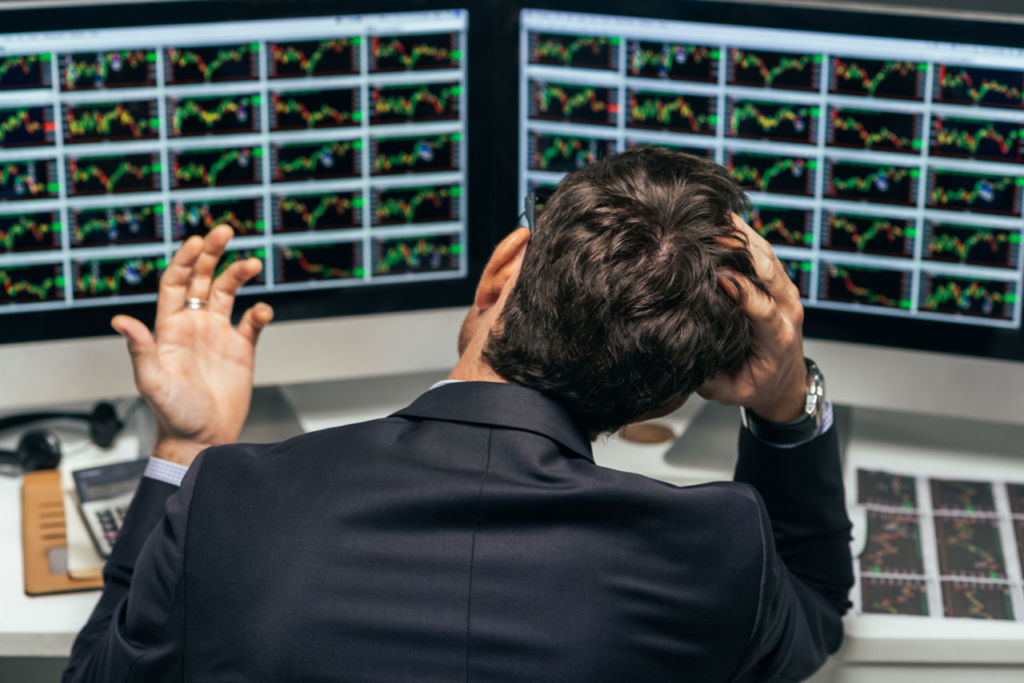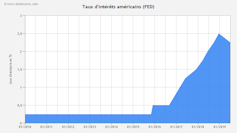The radical uncertainty of global finance
Every year, the traditional summer break is accompanied by more or less pertinent commentaries from on-call economic observers on the foreseeable situation at the start of the new school year in September, and on the economic situation forecast for the last quarter of the year.
Roland Pérez, University of Montpellier

In this exercise, which is sometimes akin to a chestnut, analysts scrutinize weak signals that could provide clues to support their forecasts. This year, 2019, they will have no need to gather such significant details, as the events, facts and information observable in recent weeks are numerous and sufficiently concordant to enable a documented analysis.
After Iran, Mexico, Venezuela, the European Union and many other countries, he is now once again attacking China, a country with which he wants to reduce its structural trade deficit, using the classic method of import taxes. But China is not Venezuela, and it has begun to retaliate, on the one hand by reducing some of its imports from the United States, and on the other by letting its currency float on the foreign exchange markets.
These two events are cause for concern, as they express the beginnings of a trade war, via the classic instruments of tariffs and exchange rates. While we know how such a conflict starts, no one can prejudge either its scale or its outcome. As this is a confrontation between the two giants of the world economy, we cannot rule out a lose-lose outcome for both parties, with significant collateral damage for the rest of the world.
Pre-election climate in the United States
In this same context, we need to place events specific to monetary policy in the context of central bank behavior. Over the past dozen years - mainly in response to the global financial crisis of 2008 - these central banks (Japan, then the USA and the EU) have implemented so-called "accommodative" financial policies, involving a sustained fall in key rates - to near-zero or even negative rates - and virtually limitless repurchasing of bank debt ("quantitative easing").
The good health of the US economy in recent years had allowed Federal Reserve (Fed) officials to begin returning to a more conventional situation, resulting in a gradual rise in key rates. This was without taking into account President Trump's demand for further rate cuts.

This internal confrontation has so far resulted in a mini cut (a quarter-point) in the main rate, a concession from the current Fed chief, accompanied by a solemn warning from the four former officials expressing their concern about the central bank's independence from political power. At this stage, no one can predict how the positions of the various parties will play out in practice over the coming months, especially given the pre-election climate in which the country concerned finds itself.
Financial markets, which loathe this kind of uncertainty, began to panic. In just a few sessions in August, the main indices lost a substantial part of the gains made since the start of the current year. With the current year itself in the midst of an almost uninterrupted uptrend since the 2008 financial crisis, the real question for analysts is whether these recent upheavals mark the beginning of a sustained turnaround in the upward cycle of the financial markets, or whether they are the result of an accident linked to the current uncertainties surrounding public policy.
Overflowing treasuries
To answer these questions without preconceived ideas, we need to examine the current situation of companies listed on these markets. Several observations are in order:
- First of all, most of these large listed companies have benefited greatly from accommodating monetary policies, providing them with virtually unrestricted financing (bank loans or bonds) at very low cost, thereby lowering their average cost of capital and modifying their financing structures.
- Even so, productive investment by the major companies concerned in recent years has not been exceptional, falling within the average range of previous years. As a result, many companies and groups have a plethora of cash awaiting investment.
- On the other hand, there has been a significant rise in the number of listed companies buying back their own shares, especially in the United States, where this type of operation is less controlled than in the past. This has led to higher share prices and increased leverage, or even double leverage when these share buybacks have been financed by additional debt.
- These financing facilities, combined with the tax breaks offered by the current US administration, have produced excellent bottom-line results, boosting share prices.
- All these factors combine to create the profile of a large listed company, with good accounting and stock-market performances, and a balance sheet comprising both a surplus of cash on the assets side and considerable debt on the liabilities side.
This situation, with which many companies around the world would be content, gives us cause for concern as to the significance of this type of situation, its intrinsic quality and its durability. Accounting and, a fortiori, stock market performances are not directly linked to the business model followed, but to the financial operations carried out (debt recourse, share buy-backs, etc.); there is no guarantee that these favourable effects will be repeated in the future, unless we anticipate that they will be maintained, via monetary policies (for the cost of debt) or stock manipulation (for share buy-backs).
Warning signs of recession
This summary analysis, which obviously needs to be refined by type of company and sector of activity, leads us - if we have to give our own diagnosis - to consider that the US economy and its financial markets are indeed at the end of a bullish cycle that began with the rescue measures implemented after the 2007-2008 crisis to deal with this major crisis.
Signals to be interpreted as premises for a downturn in the global economic situation and its translation onto the markets appeared concordantly:
- On the economic front, while U.S. economic activity indicators remain in the green, concerns are emerging about the consequences of the trade war with China. These concerns have led President Trump, in his customary volte-face, to postpone for several months the new customs tax measures he had announced, notably to protect consumers worried about price rises at Christmas time... In the rest of the world, the economic situation is more worrying, with indicators already downgraded (Germany) or in the process of being downgraded (UK).
- In terms of interest rates, there has been a "rate inversion" between short- and long-term US Treasuries, a signal which analysts interpret as heralding a recession.
- On the stock markets, on several occasions in the major US financial centres, it was the companies themselves, through their share buybacks, who provided the counterpart to the other categories of agents (individuals, investment funds) who were "net sellers".
Investment funds seem to be aware of this worrying situation, and many of them are taking a wait-and-see attitude, like Warren Buffett's iconic fund, which has over $120 billion in cash awaiting investment.
These various effects combine, some of them - such as the wait-and-see attitude of investment funds - being both a consequence of the other elements identified and a factor in their aggravation.
The G7 up against the wall
Those in charge of economic and financial policies are aware of this risk of reversal, but have little room for manoeuvre. Central banks are mired in their quantitative and tariff easing policies, which, as consultant Jacques Ninet put it in his 2017 essay, is something of a "black hole of financial capitalism". President Trump is also aware of this, but will do his utmost to ensure that a new financial crisis is not triggered before the next political deadlines, or, should such a crisis occur, to shift the blame onto others (The Fed, China, etc.) and exonerate himself.
The next G7 meeting, scheduled for August 24-26 in Biarritz, will not be able to avoid an exchange, probably "muscular", between these leaders. French President Emmanuel Macron, who will be hosting the summit on behalf of France, will certainly attempt to sketch out a solution that will enable the partners concerned to find a minimally acceptable solution. He should be able to count on some members of the G7 and on the new leaders appointed, with his support, to head the European Central Bank (ECB) and the International Monetary Fund (IMF). This is not a foregone conclusion, as in the financial sector more than any other, shared trust between the players responsible for implementing a program of action is essential to the success of these actions.![]()
Roland Pérez, University Professor (e.r.), Montpellier Research in Management, University of Montpellier
This article is republished from The Conversation under a Creative Commons license. Read theoriginal article.